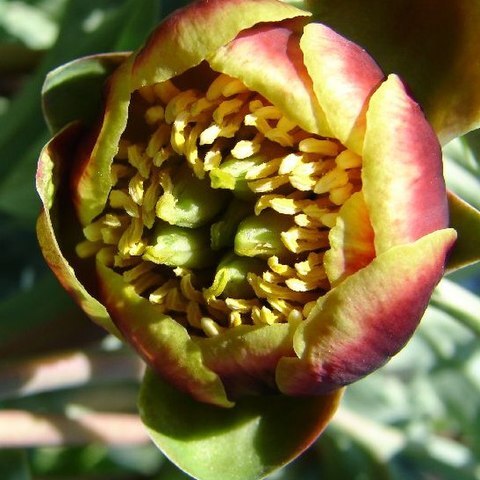A perennial plant. It forms clumps. It grows up to 45 cm tall. It spreads 50 cm wide. The leaves are dark green and deeply dissected. They are fleshy. The flowers are small and red and green. They occur singly and tend to hang over. They are almost round and 3 cm across.

